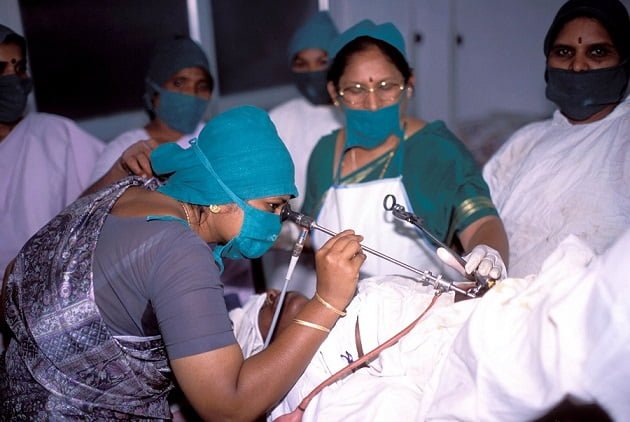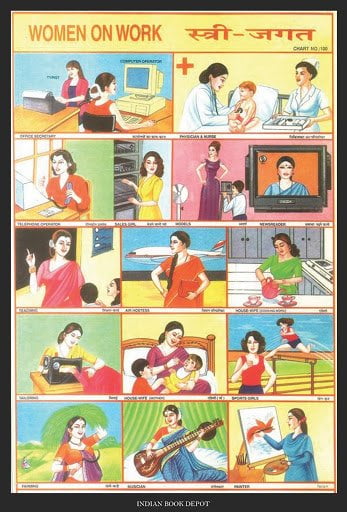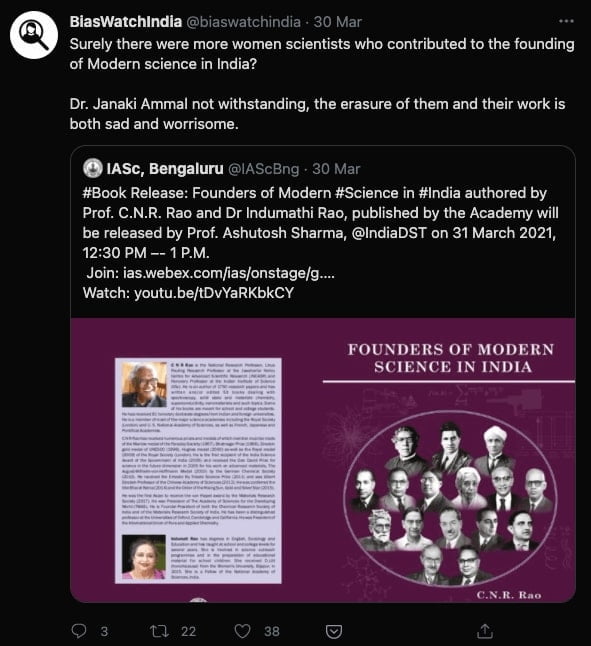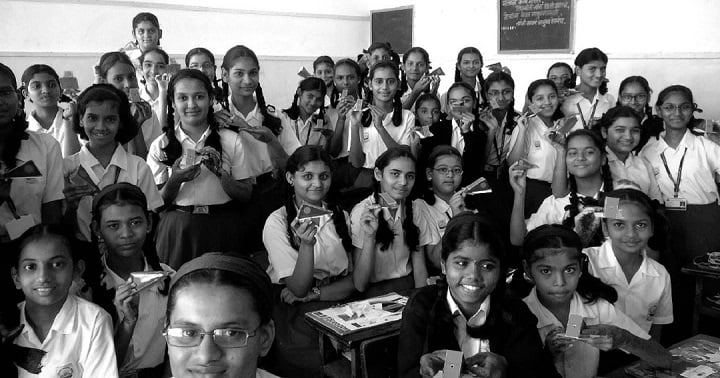Posted by Aisiri Amin
In March 2021, the Indian Academy of Sciences released a book, Founders of Modern Science. Out of 16 names, 15 were of cisgender men making it a self-declared man’s playing field.
Several organisations such as BiasWatchIndia and The Life of Science (TLoS) called them out on Twitter for blatant discrimination. “It was almost like a parody. The cover was full of men, and almost entirely Brahmins,” said Nandita Jayaraj, science writer and co-founder of TLoS.
This incident also reflects the science, technology, engineering, and mathematics (STEM) space as we know it, ‘for upper-caste men, by upper-caste men’. The lack of inclusivity and intersectionality in STEM has drawn attention but not solutions. Financial sector analyst at CGAP and co-author of the 2019 World Bank report on advancing women’s participation in STEM, Sai Krishna Kumaraswamy, said that male domination has created a “chilly climate” in the field.
About 43% of STEM graduates in India are women, which is the highest in the world, but their share in STEM jobs is a mere 14%. Moreover, women constitute only 14% of the 280,000 scientists, engineers in research and development institutes in India.
There is a lack of research on LGBTQIA+ people in STEM which contributes to the sense of invisibility that further marginalises them. “There are only two openly queer/trans people in faculty positions in India,” Jayaraj said.
The underrepresentation of women and LGBTQIA+ people in STEM is rooted in gender disparities, cultural stereotypes, and the lack of inclusive policies.
Socio-Cultural Barriers and Biases
Biases can be implicit such as boxing women as caregivers or as incapable of excelling in science or mathematics.
“They are not overt; we don’t express them, and many don’t even believe that they have them. But it’s prominent in recruiters, faculty, parents, cisgender male peers about women’s capability in STEM,” said Kumaraswamy.
Explicit bias is seen in listings such as ‘married candidates need not apply’ or ‘women need not apply’ or ‘if you need this job, you need to remain unmarried.’ Also, in designing the system in a way that is not supportive of anyone who doesn’t identify as a cisgender man.

Not including female restrooms, professors asking men to answer questions in class to excluding women from men’s bonding sessions such as golf sessions, are some of the many ways to ensure opportunities for advancement are not available to them.
“They are not saying that you can’t be here but they behave in a way that alienates and excludes you,” Kumaraswamy says.
Cultural stereotypes are also used to control women’s choices and justify restrictions. For instance, textbooks and picture charts showing scientists as a man and a nurse or a teacher as a woman instills ideas about who she can or can’t be at a very young age.
Moreover, a woman’s career choices are tailored with the mindset that her priority should be her family. These stereotypes shape a woman’s career, said Dr Abha Bhagat, research officer at Australian Council for Educational Research (ACER) and co-author of the 2019 ACER report, Gender Disparities in STEM: Evidence from India.
Despite having a PhD in molecular biology and biotechnology, she could not pursue her career in that field as it was ingrained in her that family was the priority.
“Our parents’ generation are brought up with this mindset that they knowingly or unknowingly pass on. I remember when I won the CSIR fellowship for my PhD, my father said go for it but if I get a good boy, I’ll get you married so you might have to quit whatever you are doing at that point of time,” she said
Baby Penalty, Leaky Pipeline
Many women drop out of a STEM career midway or quit completely which is called the ‘leaky pipeline’. This could be related to various factors including, but not restricted to, the wage gap, lack of mentoring, gendered households, glass ceiling, and workplace harassment.
The baby penalty is another systematic gender barrier that women who have babies face at the workplace regarding pay, career growth, or perception of competence. “The mindset is that they choose to have a baby and hence, they are doing something extra for themselves so why should they get extra privileges?” Kumaraswamy said.

Many are forced to quit because they can’t afford childcare or their organisation lacks flexibility.
“I had to take a break of two years after having a baby and it was difficult to get back. Pursuing STEM and spending long hours in the lab daily was unthinkable,” says Dr Bhagat.
Usually, the primary caregiver, the only caregiver, is often the mother. “Often when the male faculty members take paternity leave, they come back with two publications and a monograph. They see it as a paid leave not as having to take care of their baby,” Kumaraswamy said.
Also read: Women And Tech: Addressing Gender Gap Through Feminist Technology
Built on Exclusion
Historically, science was built on exclusion based on gender, caste, and race. “We have Einsteinian science, Newtonian science which are all bodies of science built by men of privilege,” Kumaraswamy said.
However, it’s important to acknowledge that this exclusion is a reflection of the social frameworks of the society which promotes the cis-gender men-led Brahminical patriarchy.
“As a society, we push aside anyone who doesn’t align with the mainstream. We impose binary so where do the non-binary people go?” asked Abigail Silversmith, a lesbian trans woman and an undergraduate student of physics, mathematics, and chemistry.
Silversmith talks about how the university is not a safe place for queer and trans people. “From misgendering to deadnaming to harassment, the system is built to break us into opting out.”
“For instance, if a queer or a trans person gets a bad grade, some professors associate it with the person’s gender and sexual orientation. It’s like you are essentially on the floor of the power hierarchy,” she said.

Moreover, there is a clear lack of support structures for people with disabilities, which further creates an exclusionary environment. Silversmith is autistic and the space she has to navigate through every day is completely ableist. “The world works with the assumption that everyone can do everything which is inherently ableist, the construction itself is ableist,” Abigail said.
It has all taken a toll and is one of the reasons that Silversmith has decided to shift to a STEM-allied field, taking up the study of science history to look at how queer people have survived within the Indian scientific setting. “It’s history that deserves to be written.”
Also read: When Work Comes Home: Pandemic Realities For Indian Women In Tech
Inequality in Quality of Education
A study by ASER in 2019 revealed that parents are more likely to send girls to government schools, and boys to private schools.
But about 50% of Class 5 students and 25% of Class 8 students enrolled in government schools across the country cannot read a simple Class 2 text. This shows the quality of education in these schools.
“By not looking into the kind of education girls are getting, we might be systematically disadvantaging them from pursuing STEM education and career,” Kumaraswamy said.
Often in low-income families, educating a girl can be ticking a box, with priority being their marriage.
However, Dr Bhagat in her study found that these gender disparities prevail even in higher socio-economic categories where we might expect more equitable access to resources.
“There is a performance gap between boys and girls in science and mathematics, in favour of the boys, as they move from primary to secondary grades and this could be related to socio-cultural factors and stereotypes. Even in high-income families, the expectations imposed on girls seem to remain the same,” she said.
Need For Solutions Backed With Action
The way forward, the solutions, to take down the gender barriers are still more on paper, less in action. More so because it involves actively listening to those who have been excluded, marginalised, and harassed. It urges action that requires unlearning, re-learning, and making space.
- First, persistent gender sensitisation, an inclusive school curriculum that is supportive of students with disabilities, and equal access to quality education, is crucial.
- Second, visibility is important to counter the deep-rooted idea that STEM is a man’s job.
- Third, mental health support and a sense of community in schools and universities can be vital in reducing the dropout rates.
- Four, there needs to be more flexibility at work. If anything, the pandemic has taught us we can all work from home. Workplaces should implement on-site childcare policy, and strong anti-discriminatory and anti-harassment laws.
And finally, it’s time to put pressure on people to take accountability. Like how BiasWatchIndia uses data to call out gender under-representation in Indian academia. And The Life of Science amplifies stories of Indian women in science and emphasises the need for science media to question the gender gap in science.
There is much to do if there is willingness. Moreover, it’s quite narcissistic to think that exclusion of women and LGBTQIA+ people does not affect scientific and technological advancements.
As Kumaraswamy said, “Just imagine if we had only opened up the space for all those people who had been excluded. The world would have been much richer and technologically advanced. Society is a lot poorer when science is made only by men.”
Also read: Women In STEM: A Scientist Recounts The Discrimination She Faced At Workplace
Aisiri is a freelance journalist specialising in gender, culture and social justice. She is the co-founder of INKLINE, an international media website featuring solutions-focused stories.
This article is a part of 101Reporters’ Rukhmabai Fellowship Stories About Women In Stem and has been re-published here with consent. In this series, 101Reporters cover the inspiring work of Indian women in the fields of STEM.
About the author(s)
101Reporters is a pan-India network of grassroots reporters that brings out unheard stories from the hinterland.






Check out Book Girls Can Be Engineers by Jamila Lindo https://www.amazon.com/Girls-Can-Engineers-Jamila-Lindo/dp/0578857375/ref=sr_1_5?dchild=1&keywords=girls+can+be+engineers&qid=1620993088&sr=8-5